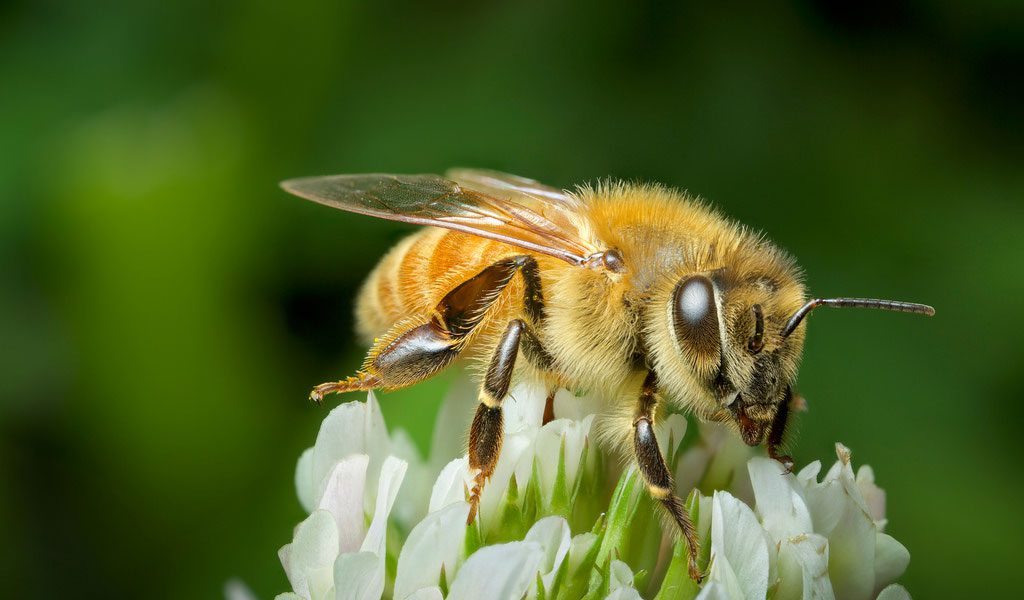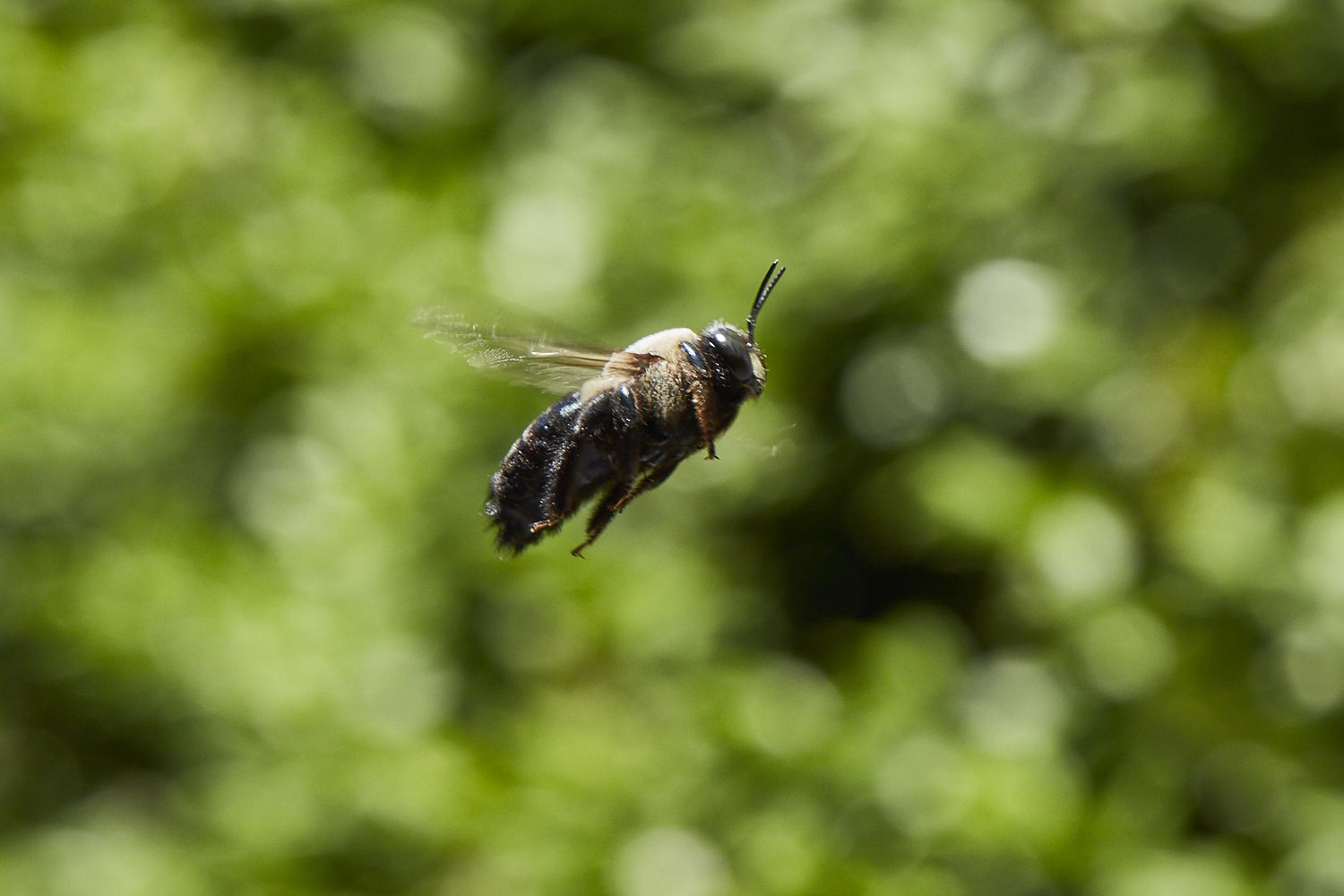Bees are known for their important role in pollination and honey production, but they can also be dangerous if provoked. While only female bees have stingers, some species are more aggressive than others.
In this article, we will explore the top five most aggressive bee species based on research. We will discuss their characteristics, behavior, and potential danger to humans. It is important to note that bees will generally only attack if they feel threatened or if their nest is disturbed, so it is best to avoid disturbing bee nests and to seek professional help if you need to remove a nest from your property.
You are reading: The Top 5 Most Aggressive Bees

Top 5 Most Aggressive Bees
Africanized Honey Bee

Africanized honey bees are a hybrid between European and African bee subspecies which were inadvertently released in Brazil in the 1950s. They have spread to the south as far as northern Argentina and to the north into the United States, as well as throughout much of South and Central America.
Africanized honey bees are typically much more defensive, react to disturbances faster, and chase people further (400 m) than other varieties of honey bees. They are less predictable and more defensive than European honey bees.
Africanized honey bees are slightly smaller than their counterpart, golden yellow with darker bands of brown. They have a much greater aggressive and defensive behavior than European honey bees.
Africanized honey bees have small colonies, so they can build nests in unique places such as tires, crates, boxes, and empty cars. Africanized honey bees become most violent when protecting their nest, and they often swarm intruders within a much larger radius than other bee species.
Symptoms of localized reactions to Africanized honeybee stings include pain, swelling, warmth, redness at sting site, and itching. It is not recommended to approach any nest if you live within 100 miles of an area where Africanized honeybees are common.
If you suspect an infestation, contacting a licensed pest control professional is the best way to know if there is an infestation.
Carpenter Bee

Carpenter bees, also known as wood-boring bees, are a species in the genus Xylocopa of the subfamily Xylocopinae.
Here are some key characteristics and behaviors of carpenter bees:
– Appearance: Carpenter bees are often mistaken for bumblebees due to their similar size and appearance. However, there are some distinguishing features:
– Males of some species have a white or yellow face, unlike bumblebees.
– Females lack the bare corbicula (pollen baskets) of bumblebees, and their hind legs are entirely hairy.
– Carpenter bees have a black, bare, and shiny abdomen, while bumblebees have a hairy abdomen with yellow markings.
– Nesting Behavior: Carpenter bees get their name from their nesting habits. They burrow into hard plant materials such as dead wood, bamboo, and even some types of soft stone. The female carpenter bee begins her nest by drilling a perfectly round entrance hole (about 1/2 inch in diameter) into the wood. She then tunnels with the grain of the wood, creating galleries for her offspring.
– Solitary Life: Unlike social bees such as honeybees, carpenter bees are solitary insects. Each female mates with a male to produce offspring, and they do not live in nests or colonies.
– Habitat: Carpenter bee nests can often be found in decks, eaves, fascia boards, doors, railings, window trim, and other wooden surfaces. They prefer to attack soft, unfinished wood that is greater than two inches thick.
Read more : Discover 9 Animals That Roam Atop Colorado’s Tallest Mountain
– Aggression: Male carpenter bees can be more aggressive and territorial, but they are harmless and cannot sting. Female carpenter bees have stingers and can sting in defense if provoked. However, they are generally not aggressive towards humans unless they feel threatened.
– Overwintering: Adult carpenter bees overwinter in abandoned nest tunnels, where they have stored limited pollen to survive the colder temperatures. They will emerge in the spring to feed on nectar, mate, and build new galleries.
Honey Bee
Honey bees are social creatures that live within colonies with a queen, thousands of workers, and a few male drones. Here are some key characteristics and behaviors of honey bees:
– Appearance: Honey bees are usually oval-shaped creatures with golden-yellow colors and brown bands. They are fuzzy pollinators that bring in billions of dollars for agricultural services, according to the United States Department of Agriculture.
– Nesting Behavior: Workers make nests from wax, which they secrete from their abdominal glands. Within each cell, young workers place pollen and nectar as food for developing larvae. Male drones are ejected from the nest to die during autumn, after they have completed their only task in life: to mate with queens.
– Daily Activities: The age of honey bees plays an important role in determining which individuals perform various daily activities. While honey bees forage for food in groups, a colony can survive without foraging for several years by living on food reserves and huddling in large, compacted masses during winter seasons.
– Communication: There are two major theories on how honey bee foragers communicate with other workers about a new food source: the honey bee dance and the odor plume. The dance language combines dancing and odor as a bee’s means of communication, while the odor plume theory claims that honey bee recruitment relies solely on floral odor. The honey bee dance plays an important role in the survival of the species.
– Aggression: Honey bees are not commonly known as aggressive because of their docile nature. They are not typically aggressive towards humans unless they feel threatened. However, measures should be taken to ensure that hives do not exist in close proximity to your home, due to the possibility of getting stung.
– Importance: Honey bees serve a significant role in pollination and ecology, and they bring in billions of dollars for agricultural services. Bees pollinate approximately one-third of the food we eat.
It is important to note that while honey bees are not commonly known as aggressive, they can still sting in defense if provoked. It is best to avoid disturbing bee nests and to seek professional help if you need to remove a nest from your property.
European Wool Carder Bee
The European wool carder bee, scientifically known as Anthidium manicatum, is a species of bee in the family Megachilidae, which includes leaf-cutter bees and mason bees.
Here are some key characteristics and behaviors of the European wool carder bee:
– Appearance: European wool carder bees are very distinctive, with yellow spots down the sides of their abdomens. They are medium-sized bees, with the males being slightly larger than the females.
– Nesting Behavior: These bees get their name “carder” from their behavior of scraping hair from leaves, such as lamb’s ears, and carrying this hair bundled beneath their bodies to be used as a nest lining. Unlike other megachilids, they do not cut leaves or petals for their nests.
– Territorial Behavior: Male European wool carder bees engage in territorial behavior, aggressively chasing other males and pollinators from their territory. They are known to be quite aggressive in defending their preferred foraging sites.
– Distribution: The European wool carder bee is native to Europe, Asia, and North Africa. However, it has recently been observed in regions of South America, New Zealand, and the Canary Islands, indicating its expanding range. In North America, a similar species, Anthidium maculosum, is commonly referred to as the wool carder bee.
Read more : Discover 6 Animals That Lurk Atop Pennsylvania’s Tallest Mountain
– Ecological Impact: European wool carder bees are important pollinators, particularly for plants in the mint family (Lamiaceae). They have been observed visiting a wide range of flowers, including lavender, thyme, and lamb’s ears.
– Invasive Species: In some regions, the European wool carder bee is considered an invasive species. For example, in the western United States, it has been recently detected and is of concern due to its potential impact on native bee populations and plant-pollinator interactions.
Stingless Bee
Stingless bees, also known as meliponines, are a large group of bees comprising the tribe Meliponini in the family Apidae. Here are some key characteristics and behaviors of stingless bees:
– Appearance: Stingless bees are similar in appearance to honeybees, but they are usually smaller and have a darker coloration.
– Nesting Behavior: Stingless bees build their nests in tree hollows, crevices, or other protected areas. Unlike honeybees, they do not construct combs, but instead store their honey and pollen in small pots or wax cells.
– Defense Mechanisms: Stingless bees have stingers, but they are highly reduced and cannot be used for defense. Instead, these bees exhibit other defensive behaviors and mechanisms, such as biting and releasing a sticky resin to trap predators.
– Distribution: Stingless bees are found in tropical regions around the world, including South and Central America, Africa, and Southeast Asia.
– Importance: Stingless bees are important pollinators for many crops and wild plants. In addition, their honey is highly valued for its medicinal properties in some cultures.
– Hive Keeping: Stingless bees are harmless to humans, making them an increasingly attractive addition to suburban backyards. Most stingless beekeepers do not keep the bees for honey, but rather for the pleasure of conserving a native species whose original habitat is declining.
It is important to note that while stingless bees are harmless to humans, they should still be treated with respect and care to avoid disturbing their nests or colonies.
FAQS
1. What makes a bee species aggressive?
Aggressiveness can vary among different bee colonies, but some species are known to be more aggressive than others. Factors that can contribute to aggressiveness include the size and location of the nest, the presence of predators or other threats, and the genetics of the bees themselves.
2. Are all female bees capable of stinging?
No, only female bees have stingers. Male bees do not have stingers and are generally not aggressive.
3. What should I do if I encounter an aggressive bee species?
The best course of action is to avoid disturbing the nest or colony. If you need to remove a nest from your property, seek professional help to avoid getting stung.
4. Are honey bees aggressive?
Honey bees are not commonly known as aggressive because of the variance in aggression among different colonies. However, they can still sting in defense if provoked.
5. Can aggressive bees be kept as pets?
It is not recommended to keep aggressive bee species as pets, as they can pose a danger to humans and other animals. However, some species of stingless bees can be kept in backyard hives for their pollination services and honey production.
6. How important are bees to the environment?
Bees are important pollinators for many crops and wild plants, and they play a crucial role in maintaining biodiversity and ecosystem health. In addition, they bring in billions of dollars for agricultural services.
Source: https://petstutorial.com
Category: Animals










